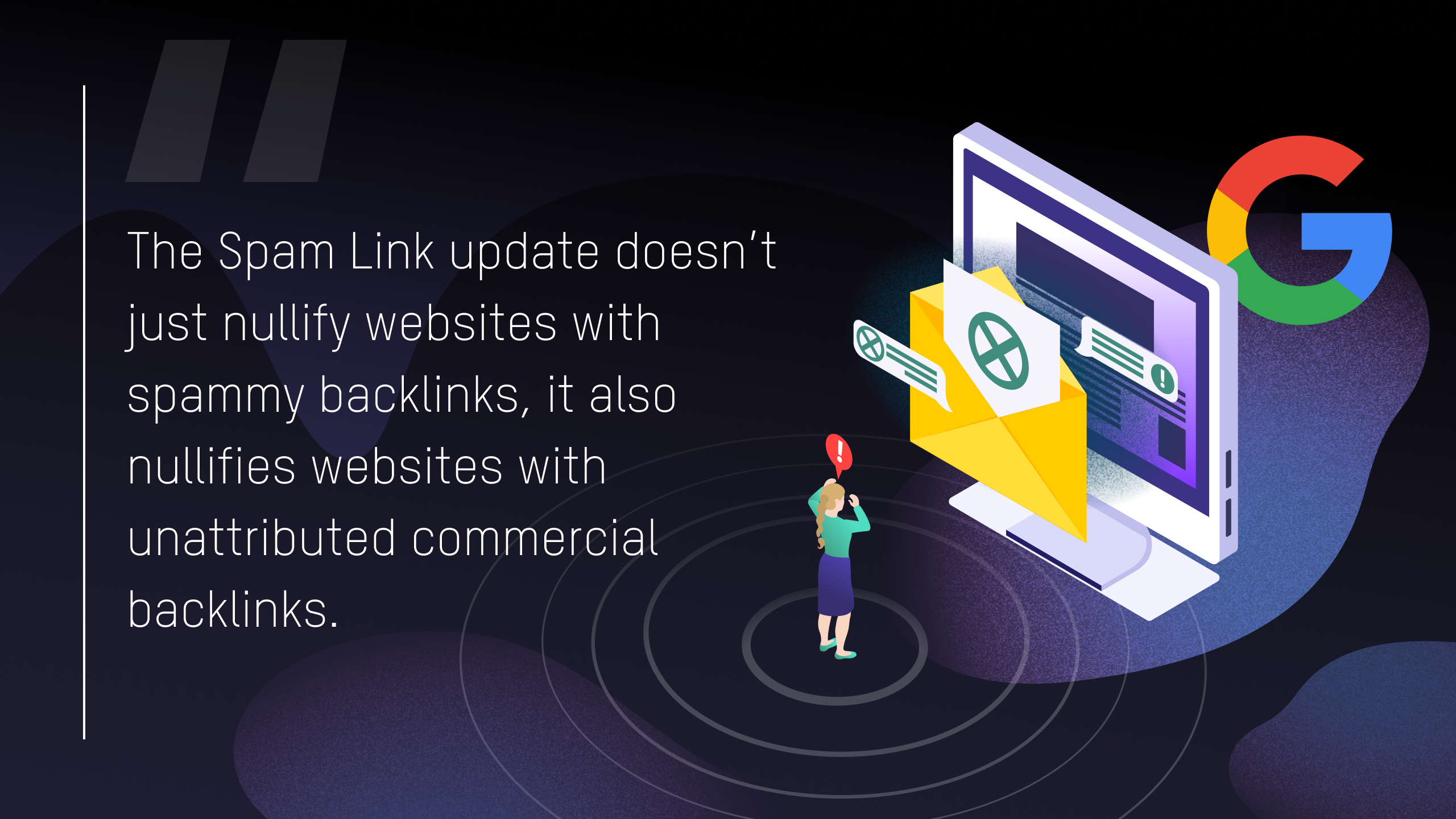How does this recent rollout impact your search engine standing?
In August 2021, Google introduced the Link Spam update in an effort to prevent websites with toxic backlinks from ranking high on search engine results pages (SERPs). This update enables the search engine to detect spammy backlinks on web pages across different languages and make them invisible to the ranking algorithm.
Basically, this update aims to reduce the amount of spam content on SERPs. While it doesn’t penalize websites with spammy backlinks, the Spam Link update does lower their SERP standing. In fact, numerous websites experienced a decrease in their traffic, as well as SERP position, soon after its release.
However, websites that engage in link spam aren’t the only ones that witnessed fluctuations in their ranking. Even those that don’t take part in this manipulative link-building process saw an instant dip in their rankings. This is because the Spam Link update doesn’t just nullify websites with spammy backlinks, it also nullifies websites with unattributed commercial backlinks.

Commercial backlinks pertain to sponsored links, affiliate links, and guest posting links. Because of the Link Spam rollout, Google now considers unqualified commercial backlinks as spam. This intensified guideline on link attribution is just part of Google’s efforts to reduce manipulative ranking practices on its search engine.
So for websites that take part in content partnerships and link exchanges, proper tagging conventions must be observed to avoid running the risk of being hit by this update. To remedy this, Google recommended the use of rel tags to help the search engine properly identify the nature of the links and determine whether or not to index and rank them.
For sponsored and affiliate links, the corresponding rel-tag is “rel=sponsored,” which signals to the search engine that the outbound link is a sponsored link that Google can crawl and index. Meanwhile, for guest posting links, the rel-tag is “rel=nofollow,” which tells the search engine that the outbound link is an unendorsed link and must be ignored in ranking.
Indeed, with the Link Spam update, qualifying backlinks has become imperative. But aside from proper link attribution, Google has also suggested that websites follow fair link-building practices to shield themselves from the Spam Link update and improve their SERP standings.
First and foremost, it’s important to build natural backlinks, which are the very foundation of a good link-building strategy. Publishing well-researched, authoritative content will also attract natural backlinks and increase your domain authority.
But make sure to follow appropriate link embedding practices in the process of producing high-quality content. Indeed, how you house your link is as important as the quality of your overall content. So it’s best to provide detailed context on links. This means using descriptive anchor texts on links to provide context and help Google’s algorithm recognize the link. Apart from that, using appropriate keywords on anchor texts can also help you gain traffic and boost your SERP performance.
Aside from link embedding, you should keep an eye out for domains that point to your website. While it’s important to provide outbound links that lead to credible websites, you should make sure that the websites that are linking to you have a high domain score as well. That’s because Google doesn’t just assess the number of links redirecting to you, it also considers the quality of these referring domains. Certainly, associating your domain with high-authority websites can be a good boost to your SERP standing.



